John Koch - Gifted Gallery
- Lilium

- Nov 16, 2022
- 6 min read

John Koch, born 18 August 1909, was an American painter and teacher, and an important figure in 20th Century Realism. He is best known for his light-filled paintings of urban interiors, often featuring classical allusions, many set in his own Manhattan apartment.

His work is in the collections of prominent American museums, including the Metropolitan Museum of Art, the Smithsonian American Art Museum, the Whitney Museum of American Art, the Brooklyn Museum, the Museum of Fine Arts, Boston, and many others.
Koch was born in Toledo, Ohio, to Marian Joan and Edward John Koch, and grew up mostly in Ann Arbor, Michigan. During his high school years he spent two summers at an artists' colony in Provincetown, Massachusetts. He moved to New York City in 1928, where he met and became friends with Dora Zaslavsky, a talented piano teacher, four years his senior.

He moved to Paris, where he spent five years studying on his own, copying paintings at the Louvre and other museums, and supporting himself by painting portraits. While living in Paris, Koch exhibited at the 1929 Salon de Printemps of the Société des Artists Français, and received an honourable mention.
He returned to New York City in 1934, where Zaslavsky was teaching at the Manhattan School of Music and waiting for her divorce to be finalized. They were married on December 23, 1935. The Koches' marriage was childless, which may have been a cause of regret—his 1955 painting Father and Son depicts him turning from his easel to see himself as a boy lying on the floor and sketching.


His first one-man show was in 1939 at Kraushaar Galleries in New York City, from which East River (c.1930) was purchased for the Brooklyn Museum. Kraushaar represented him for the next thirty-four years, and presented more than a dozen one-man shows.
Koch's early work may be considered Impressionist. A review of his 1943 one-man show at Kraushaar Galleries praised his "throwing off his Renoirish tendency and asserting himself on his own." Much of his mature work is made up of portraits and social scenes, including cocktail parties and scenes with the artist at work with his models. The models are often but not always nude.
Koch has developed a soft and luminous style of underpainting in egg tempera and glazing with misty oils to create a cool and ingratiating effect vaguely reminiscent of the seventeenth-century Dutch master Vermeer.
Koch was drafted into the U.S. Army in 1943, but wound up doing alternative service in New York veteran hospitals. He taught at the Art Students League of New York from 1944-1946. After World War II he became a featured artist at Portraits Incorporated, which managed commissions and charged up to $10,000 for a group portrait by him.
In 1953, John and Dora Koch bought a 14-room apartment on the tenth floor of The El Dorado, a building at 300 Central Park West. They soon bought an adjacent apartment for Dora's piano studio. After the death of Koch's mother, his father came to live with them, and appeared in individual portraits and some of the group portraits.
His Portraits Inc. commissions included Family Group (1951, Smithsonian American Art Museum), John and Barbara Wood and their two sons; Roosevelt Ladies at Oyster Bay (1953), Mrs. Quentin Roosevelt II, her three young daughters, and a friend; and a c.1954 double portrait of composer Richard Rodgers and his wife, designer Dorothy Rodgers. Publisher Malcolm Forbes commissioned two group portraits: The Forbes Family (1956) and The Forbes Family at Dinner (1966). The Forbes Magazine Collection also purchased numerous paintings by Koch. Both Koch's 1955 portrait of Princess Margaret and his 1966 portrait of actress Julie Andrews are in the collection of the National Portrait Gallery.
Cocktail Party (1956), is perhaps Koch's most famous work. "The party he portrayed occurred only in his imagination, although its attendees were all acquaintances of the Kochs in the mid-1950s. Each was painted from life at separate sittings, and placed by Koch into his immaculate new living room at the El Dorado, with the painter and his wife as the consummate hosts. John stands at the bar, self-consciously reflected in a mirror as he pours one of his famous martinis; Dora bends forward to attend to the seated music critic Noel Strauss." The painting also is an example of his games-playing with spaces and objects: "Koch often shifted the location and appearance of his precious objects in his paintings. A couch might be burgundy in one work and navy blue in another. A door might lead to a bathroom or a bedroom, depending upon the needs of the composition. In this instance, the painting over the mantle is a Tiepolo entirely of Koch's creation. Tiepolo never painted it, and the Kochs never owned it. Nonetheless, Koch thought it was a fine placement for a Tiepolo such as this one, and so here it is."

In his personal works, Koch created unusual and complex compositions, sometimes through the use of mirrors, as in Interior of Studio (1956). The painting at first appears to be a casual genre scene, with a handsome young man, Ernest Ulmer, one of Dora's piano students, relaxing on a sofa, center, while Dora is on the phone, left. Reflected in the large mirror behind Ulmer is the opposite end of the room, where piano student Don Edmans and Koch's father are engaged in conversation before the glare of a window. Also semi-obscured by the glare is Koch standing at his easel, gazing intently at Ulman (and at the viewer via his reflection). Koch seems to have given the painting to Ulmer, "which hung in his own living room for many years," and who donated it to the Metropolitan Museum of Art in 2007.

Ulmer posed for Koch's "most self-revealing painting," The Sculptor (1964). Its original title was Prometheus, the god who stole fire from Mount Olympus. A full-length standing male nude seen from behind, Ulmer towers over the seated Koch and holds a cigarette lighter at hip level, while the artist leans in to get a light. The lighter illuminates Koch's face and its flame is vividly reflected in his glasses, "a sexually loaded reference to Prometheus's gift of fire to mankind." Koch was an occasional sculptor, and modelled Prometheus and Hercules, a work depicting Hercules wrestling with the eagle to rescue the chained Prometheus. A large version of this appears in the background of The Sculptor, and Ulmer may have posed for the sculpture as well as the painting. Koch's most frequent model was Dora, who appeared in dozens of his paintings, including tender double portraits painted for their wedding anniversaries.
Author Dorothy Parker's last published article was a 1964 appreciation of Koch's paintings and the nostalgic New York that they evoked: "I know Mr. Koch only through his paintings, and through the almost lyrical tributes to his works. I do not know what school of painting he belongs to; he is not, I believe, avant-garde, and he is, I gather, though I have to strain to take it in, a realist—but not of the ashcan school of the Glackens, Luks, Sloan group. He takes his realism out on the rich. His lovely ladies step out of Edith Wharton, and his graceful gentlemen come from Henry James."

John Koch suffered a stroke in 1975, that paralysed his right hand and forced him into a wheelchair. He recovered some use of his hand, but died following another stroke in 1978. Joseph B. Treaster wrote Koch's New York Times obituary: "For much of his career, Mr. Koch was regarded by the art world's avant‐garde and the powerful family of museum directors as a rather accomplished, but, perhaps, superficial society painter whose aim was nothing more serious than to please. But with the revival of Realism in the last decade, critics and many younger artists began to take a more serious view of his work."
Koch's papers are at the Smithsonian Institution's Archives of American Art, for which he recorded a 1968 oral history. The John Koch Award in Art is presented annually by the American Academy of Arts and Letters "to a young painter of figurative work," and is accompanied by a $10,000 prize. Studio - End of Day (1961) set the auction record for a painting by Koch. On 1 December 2005, it realized $604,000 at Christie's New York, and is now in the collection of the Crystal Bridges Museum of American Art.
Reading Recommendations & Content Considerations

John Koch
Phillip Lopate
















































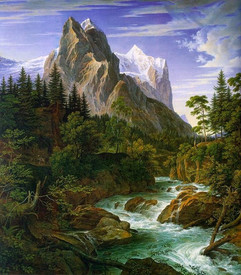









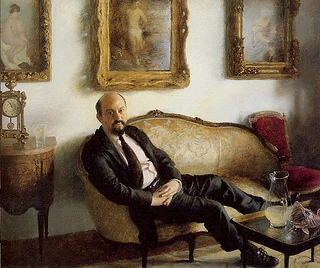




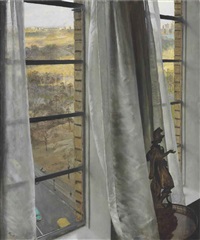

















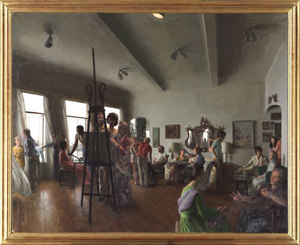







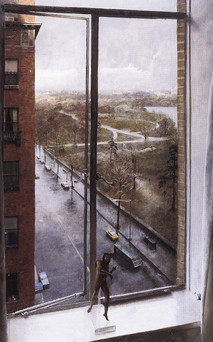
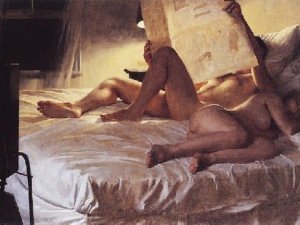





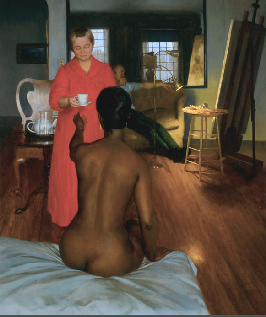




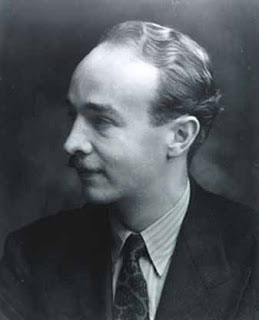
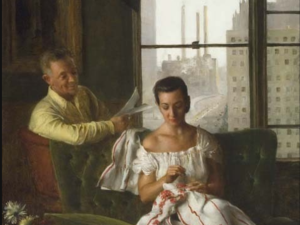



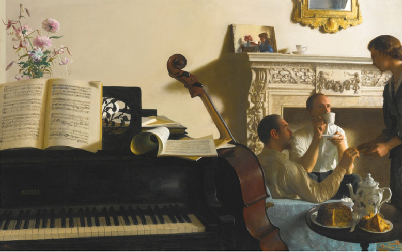







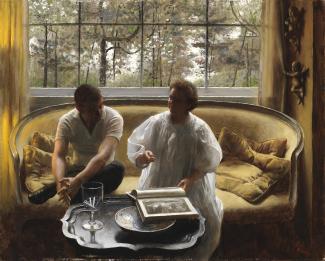








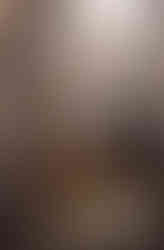












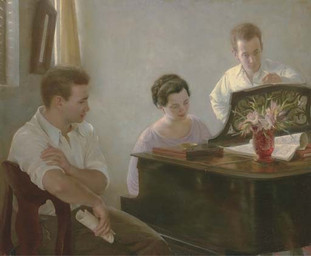























Comments